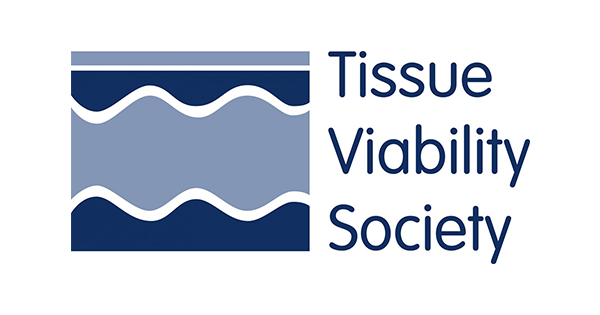One of the key functions of any leader or manager is to provide feedback to the staff team, as well as find ways to help team members grow and develop personally and professionally. Feedback ranges from the annual appraisal system, which is formal, recorded and relates to a development plan, through to informal words between a manager and staff on a daily basis. Somewhere in between these is supervision.
Supervision can be clinical, as in relating to the development of the staff member from a clinical perspective, or managerial when someone needs support in developing their leadership and management skills. Either way, supervision is about staff development and all health and social care managers should both understand and apply it.
This paper, the first in a miniseries, will uncover what supervision is and consider its strengths and weaknesses. In later papers in the serie, we will consider approaches to supervision and how managers might use these with their team members.
Defining supervision
There are a lot of different definitions of supervision in the health and social care literature. In part this is because supervision occurs in a variety of settings and in part it is because there are a variety of approaches to supervision. As identified in the introduction, the two main forms of supervision that are used in health and social care are clinical and managerial.
Supervision can also be part of an ongoing process of staff development, for example, manager and staff supervision which might happen monthly or bi-monthly, or it might occur in response to a particular situation — for example, to help staff cope with the aftermath of a challenging incident. As such supervision might occur one-to-one or as part of a group might be a regular recurring event or a one-off.
Butterworth (2022) identifies how supervision should be provided to enhance rather than replace other forms of staff learning, teaching and development, and should therefore be viewed as developmental. Vekaria et al (2023) identify how supervision is relationship-based and as well as being educative, it plays an important role in emotional support and skill development, so it is also suportive.
These observations support a definition which suggests supervision is about a relationship between an experienced (clinically or managerially) individual and someone who is less experienced. Such a relationships, sometimes couched as reflection with another person (Bifarin and Stonehouse, 2017), is used to enable the more experienced individual to support the growth and development of the supervisee.
Supervision in a group can have similar benefits, with Valentino et al (2016) identifying how it might enable participants to develop peer feedback skills, as well as the ability to speak in public. Group supervision is also effective and efficient as it allows the supervisor to provide supervision to a few people at the same time. In group supervision, people can explore an issue together and discuss how they deal with it. This enables the participants to gain more than just one view on a situation and to decide how they might, as a team, approach a similar scenario in the future.
Notably, Blomberg and Bisholt (2016) in a qualitative study show how group clinical supervision enables people to explore ethical challenges from practice together and come to some sort of resolution as a group. Management supervision can also happen in the group setting enabling the participants to address leadership and management issues and benefit from each other’s insights (Ellis, 2019). As such, group supervision can be seen to be beneficial for this individuals involved as well as the wider staff group.
At its most basic, supervision is all about overseeing someone else’s work. This is a helpful way to consider supervision, if we do not regard it as following someone round and looking over their shoulder, but rather as something altogether more supportive. Supervision creates the space for someone to, with their supervisor, either one-to-one or in a group, explore issues that arise at work, what they think and feel about them and perhaps gain some insight into how their supervisor, or fellow supervisees, have managed similar issues in the past.
The emerging understanding is therefore that supervision is about taking the time away from the workplace to reflect on a situation and for new learning to come from that reflection such that it will inform future practice (Hawkins and McMahon, 2020).
This all suggest that the supervisor/supervisee, and indeed in the group setting supervisee/supervisee, relationship needs to be one of trust (Rothwell et al, 2021). Supervision, therefore, requires that boundaries are agreed and that the people involved need to agree about issues such as confidentiality.
Because supervision is a joint enterprise it is best to consider it as something a manager or senior does with rather than to someone. In this sense, while it may be a requirement of the role, the supervision should not resemble an appraisal or management one-to-one.
Why do supervision?
At its most basic, supervision can be used to orientate new or inexperienced staff to an area of work — such as newly qualified nurses to a ward environment (Hussein et al, 2019). Investing time in the professional and personal development of staff in this way plays an important role in determining if they decide to stay in a role going forward or not. There is increasing evidence that many nurses will make the choice to stay in a clinical setting where they feel supported and that they are being developed (Hussein et al, 2019).
Done properly, supervision which is provided as a guided reflection and for developmental purposes is often regarded by nurses as being valuable and as demonstrating that a manager or senior team member is invested in their development. This feeling of worth in turn can be seen to roll over into the practice of the supervisee in that they, in turn, provide care which is person-centred.
Snowdon et al (2017) demonstrated in their systematic review of the literature that staff, from a variety of clinical professions, who have clinical supervision provide more effective care than those who do not. To some extent, the increase in effective care deliver is related to improvements in compliance with local processes of care and, as such, emphasises the importance of the communication aspects of clinical supervision.
The same research showed better health outcomes for some patients where staff have clinical supervision but failed to show any increase in patient satisfaction with their care (Snowdon et al, 2017). This underlines the staff facing benefits of supervision, especially as Martin and Snowdon (2020) also identify during stressful periods, such as those experienced during the COVID-19 pandemic
Pros of supervision
It appears, therefore, that supervision has many benefits for clinical staff which include that they:
- Experience less stress and burn out
- Have greater job satisfaction
- Build better resilience
- Experience better compassion satisfaction
- Are more likely to stay in a job
- Experience feelings of worth
- Provide better and more consistent care (Martin et al, 2021; Baldwin et al, 2022).
Downsides of supervision
There are few downsides to supervision which leaders and managers need to consider before engaging in it, these include it:
- requires all parties to understand its purpose
- requires organisational support
- being time consuming
- requiring consistent and continued effort
- takes leaders away from other tasks
- can be damaging if done badly
- can cause confusion and resentment if regularly postponed
- can make staff feel less valued if promises made in supervision are not kept (Snowdon et al, 2017; Rothwell et al, 2021).
Conclusion
This paper, the first in a mini-series on supervision has identified some of the salient features of clinical and management supervision. We have seen how supervision needs to take place in a relationship of trust and within boundaries of confidentiality. This paper has expressed that supervision can take place one-to-one or in groups and while it is most useful as a recurring event, it might also be used to help teams deal with a traumatic event.
This paper has also touched on some of the pros and cons of supervision as it applies in the clinical team. We have seen that benefits often accrue for the professionals involved and that it may have a bearing on the clinical outcomes for patients.
In the next paper in this mini-series, we will consider how supervision might be provided in the clinical setting and who might provide it. We will consider both the use of one-to-one and group supervision and explore the theory which underpins each.





